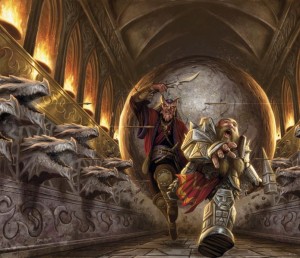D&D has always been a game where players work together to accomplish a common goal rather than compete against each other for a prize. It is a game where the DM provides a backdrop for character conflict. Players are likewise not competing against the DM. Instead everyone should collaborate to create a great story and a fun experience.
In order to provide a backdrop where players can develop their characters, we need to let go of the tendency to design encounters to challenge the party’s damage output. The story should advance by developing such themes as characters actively helping others, conquering foes, and overcoming afflictions or wounds. If we use valid rewards for contributing to a team effort this will inspire others to reciprocate.
